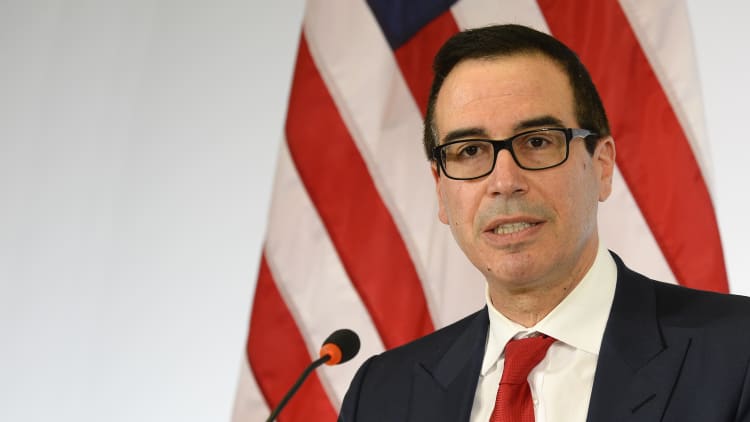While the dust was still settling from President Trump's surprise missile strike on Syria, the role the Russians might have played in the suspected chemical attack that wiped out some 100 civilians — and sparked the American show of force — remained unclear Friday.
Two senior military officials who briefed reporters in the wake of the American aerial assault on Shayrat Airfield said "we think we have a good picture of who supported" Tuesday's attack on rebel-held Khan Sheikhoun. The U.S. has laid responsibility for the chemical attack on Syrian President Bashar al-Assad's forces.
But the officials stopped short of blaming Moscow outright.
"At a minimum, the Russians failed to rein in the Syrian regime activity," they said. "We know the Russians have chemical weapons expertise in country. We cannot talk about any complicity between the Russians and the Syrian regime in this case."
"We are carefully assessing any information that would implicate [that] the Russians knew or assisted with the Syrian capability," they said.
Russia, which supports Assad, has confirmed that Syria attacked the town on Tuesday but insists it hit a rebel-held depot that was holding "toxic" weapons, and played no role in the deadly attack itself. It has condemned the U.S. missile attack as an "act of aggression."
The Syrians, as they have in the past even in the face of United Nations condemnation, insisted again they did not use chemical weapons on Tuesday.
More from NBC News:
Syria Missile Strikes: What Can Trump Do Now?
Trump's Syria Airstrike Sends a 'Critical Message': Ex-Pentagon Official
Supporters Back Trump After Syrian Strike, But Decision Rankles Some on Far-Right
Assad was in danger of losing a strategic airfield some 15 miles from Khan Sheikhoun to the rebels fighting to depose him when he launched the chemical attack in what the military officials described as a "battlefield desperation decision."
There is a "high degree of confidence" that the chemical unleashed was "a nerve agent like sarin" that can short-circuit the nervous system within seconds, they said.
The U.S. military has confirmed, the officials said, that Syrian regime aircraft were over the ancient town of 52,000 in northern Idlib province southwest of Aleppo, which until Tuesday's massacre was best known for its distinctive circular beehive houses.
The deadly payload was dropped by Syrian fixed wing aircraft on the town around 6:50 a.m. local time, they said. And by 7 a.m., they detected possible evidence of the nerve agent.
Later, the officials said, they detected a Russian drone hovering over a hospital run by the al-Nusra Front where the poisoning victims — including at least 25 children — were being treated.
A short time later, the hospital was bombed by an aircraft. The U.S. is uncertain whether it was Syrian or Russian.

Confronted with the horrific images out of held Khan Sheikhoun, Trump on Wednesday asked Defense Secretary James Mattis "for military options," the officials said.
By Thursday, Mattis had several options for Trump who gave the order to strike at 4:30 p.m. ET, they said.
Four hours later they began.
There were no sign of the Russians or Syrians making any attempt to evacuate their people or move their aircraft from the base ahead of the strikes, the officials said.
Earlier, Secretary of State Rex Tillerson and National Security Adviser H.R. McMaster told reporters the U.S. did not give Moscow advance warning of the strikes. There is, however, a "deconfliction" hotline the U.S. and Russian have used since 2015 to make sure their aircraft don't attack each other in Syria.

